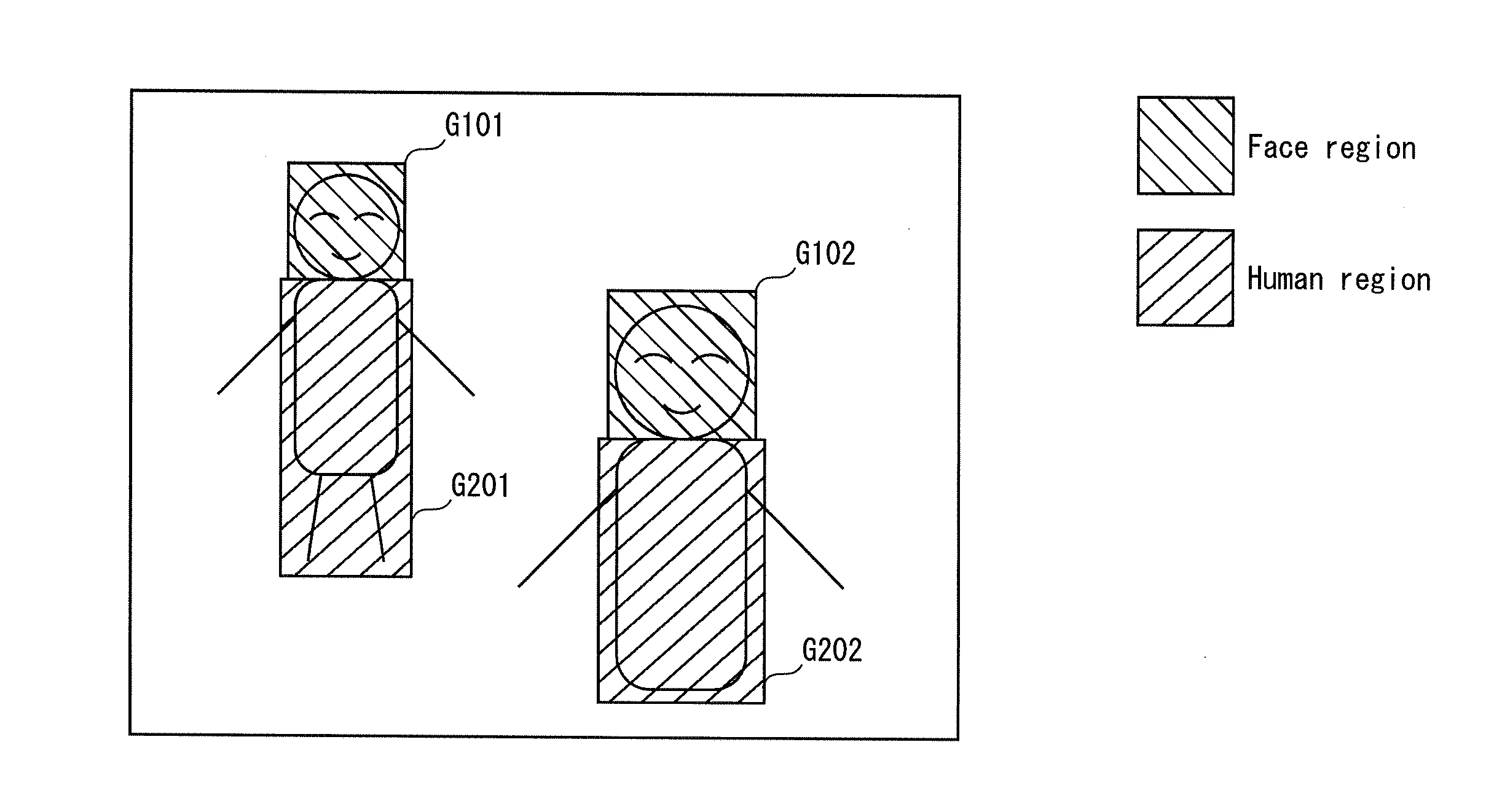Image processing device
a processing device and image technology, applied in the field of image processing devices, can solve the problems of time-consuming and labor-intensive for users to find the desired image, and achieve the effect of reducing the amount of user trouble required
- Summary
- Abstract
- Description
- Claims
- Application Information
AI Technical Summary
Benefits of technology
Problems solved by technology
Method used
Image
Examples
embodiment 1
1. Embodiment 1
[0044]The following describes an embodiment of the present invention with reference to the accompanying drawings. First, Embodiment 1 is directed to an arrangement applicable to an image classification device used for organizing a user's collection of images, which may include a large number of static images and video images taken within a local domain, such as user's household. According to the arrangement, attributes common among the collection of images are used to ensure accurate automatic classification of objects (physical objects) appearing in the images.
1.1 Structure
[0045]FIG. 1 is a block diagram showing the structure of an image classification device (image processing device) 1. In FIG. 1, the image classification device 1 includes a local data storage unit 11, an image feature value computing unit 12, a common attribute extracting unit 13, a classifying unit 14, a classification dictionary creating unit 15, a classification model information storage unit 16...
embodiment 2
2. Embodiment 2
[0110]The following describes Embodiment 2 of the present invention, with reference to the accompanying drawings. Embodiment 2 is directed to an arrangement applicable to an image classification device used for organizing a user's collection of images, which may include a large number of static images and video images taken within a local domain, such as user's household. According to the arrangement, common attributes among the collection of images are used for the classification, and the classification process is recursively performed using the classification result of the previous process. As a consequence, objects (physical objects) appearing in the images are automatically classified with accuracy. In the description of Embodiment 2, the same reference signs are used to denote components having the same functionality as the components described in Embodiment 1. In addition, since the same description is applicable, no further description is given below.
[0111]The ...
embodiment 3
3. Embodiment 3
[0148]The following describes Embodiment 3 of the present invention, with reference to the accompanying drawings. Embodiment 3 is directed to an arrangement applicable to an image classification device used for organizing a user's collection of images, which may include a large number of static images and video images taken within a local domain, such as user's household. According to the arrangement, attributes common among the collection of images targeted for classification are extracted by using region information acquired from each target image, and then the classification process is performed. As a consequence, objects (physical objects) appearing in respective regions of the images are automatically classified with accuracy. Note that the region information specifies various regions in an image, such as a face region in which a human face is detected, a human region in which a human body is detected, a surrounding region including image regions corresponding to...
PUM
 Login to View More
Login to View More Abstract
Description
Claims
Application Information
 Login to View More
Login to View More - R&D
- Intellectual Property
- Life Sciences
- Materials
- Tech Scout
- Unparalleled Data Quality
- Higher Quality Content
- 60% Fewer Hallucinations
Browse by: Latest US Patents, China's latest patents, Technical Efficacy Thesaurus, Application Domain, Technology Topic, Popular Technical Reports.
© 2025 PatSnap. All rights reserved.Legal|Privacy policy|Modern Slavery Act Transparency Statement|Sitemap|About US| Contact US: help@patsnap.com



